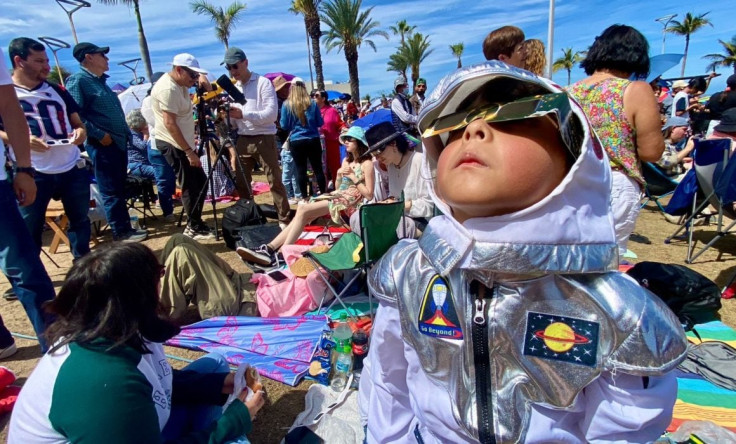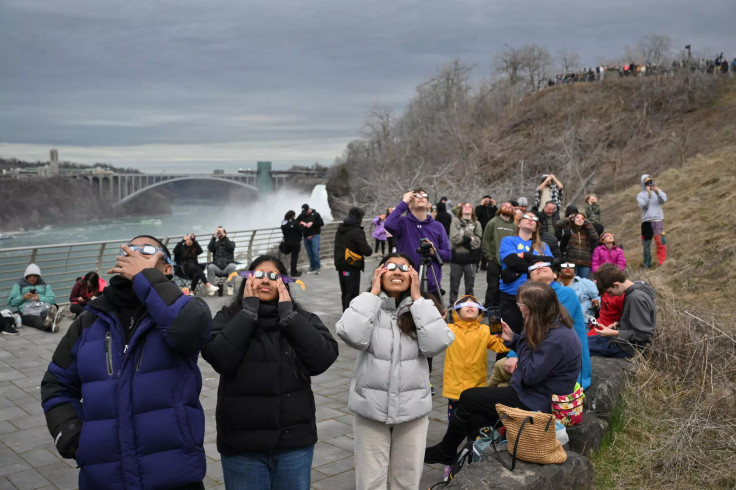
From the sunny and humid Pacific coast of Sinaloa to the vast swaths of the central U.S., and across to the cool and windy Newfoundland and Labrador in Canada, a midday darkness swept across North America. Millions of viewers were captivated by the total solar eclipse as it traveled through Mexico, the U.S., and Canada.
Dubbed the Great American Eclipse, this rare event unfolded with precision. Here are the highlights:
Path of Totality: The moon slid between Earth and the sun, casting a shadow that traced a path across 15 U.S. states, Mexico, and parts of Canada. In this narrow corridor known as the "path of totality," the sun was completely obscured, leaving only the ethereal glow of the solar corona visible.
From dawn to dusk to dawn in Mazatlán: This resort on the Mexican Pacific coast was the first city in North America to experience the total eclipse. According to Mayor Édgar González, the city, with a population of almost 500,000, received more than 100,000 visitors just for the eclipse. Many of them, he said, were scientists who wanted to take advantage of the coastal charm.
"This phenomenon has given Mazatlán impressive promotion," González told a press conference. "We had visitors from more than 50 countries to experience the total solar eclipse, and we were literally in the eyes of the world."
The total solar #eclipse is now sweeping across Indianapolis.
— NASA (@NASA) April 8, 2024
This is the first time in more than 800 years that the city is experiencing this celestial event! pic.twitter.com/jZuKx4nUAb
Niagara Falls: As darkness descended, the iconic waterfall became another focal point for eclipse enthusiasts. Hundreds of thousands of people gathered at this natural wonder, their eyes turned skyward.
"We waited for hours, and within seconds, the sky turned pitch black, and the falls themselves seemed to hold their breath," Samantha Rojas, a tourist from Monterrey, Mexico, said."

Temperature Drop: In the path of totality, temperatures plummeted significantly, as was the case in Dallas, Texas, where it dropped more than 8 degrees Fahrenheit. The sudden chill caught many by surprise, as if winter had descended in April.
"We were expecting some cold, but we were surprised for almost five minutes. We had to put on our sweaters and coats, while some just endured the goosebumps, dancing with emotion," Lucero Diaz, a local confectionary worker, told The Latin Times.
Eclipse Chasers: From several observatories and research centers, scientists and enthusiasts transmitted the eclipse and explained every step of the moon's journey to block the sun on YouTube and social media.
"I can't even use words to describe what we're witnessing," said Pablo Romero Minchaca on the YouTube channel of Astrofísicos en Acción, as he and a team of colleagues from Mexico's National Polytechnic Institute and the National Autonomous University of Mexico presented the eclipse in a play-by-play fashion from several locations in Mexico's path of totality. "We're blessed to witness nature's power," Romero said from his watching station in Gómez Palacio, Durango.
Weather Challenges: Not all regions were fortunate. Clouds and storms threatened to obscure the view in states along the eclipse's path. Texas, Louisiana, Arkansas, and Oklahoma braced for severe weather. In Dallas, storms loomed on the horizon, scheduled to arrive just after the eclipse's peak.
In fact, organizers of the Texas Eclipse Festival, one of the largest eclipse-related gatherings of the day, canceled the event due to the "severe weather forecast" in the area. The festival, which was expected to attract over 40,000 people in the town of Burnet, was called off due to risks of high winds, tornadic activity, large hail, and thunderstorms. In light of the decision, attendees who had been enjoying the festival since Friday were asked to leave the premises early "for safety and to beat traffic."
NASA and its wow effect: NASA surprised audiences everywhere with comprehensive coverage of the event. Their viral content on social networks sparked a renewed interest in the cosmos. As the moon moved to block the sun NASA's tweets and live streams kept the world connected, turning ordinary spectators into celestial enthusiasts.
The total solar #eclipse is now sweeping across Indianapolis.
— NASA (@NASA) April 8, 2024
This is the first time in more than 800 years that the city is experiencing this celestial event! pic.twitter.com/jZuKx4nUAb
© 2024 Latin Times. All rights reserved. Do not reproduce without permission.







